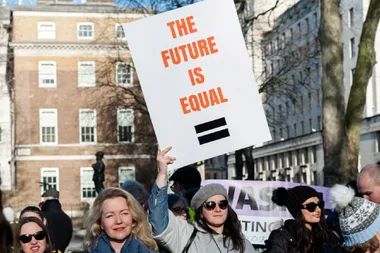The gender pay gap of every large Australian private company has been made public. This means Australians can find out the difference between how much the average male and female employee are paid at some of Australia’s biggest corporations.
The publication of the data comes as a result of the transparency amendments made to the Workplace Gender Equality Act 2012 in March 2023. Prior to the amendments, the gender pay gap data collected by the Workplace Gender Equality Agency (WGEA) was not publicly accessible. Now, thanks to a recommendation from the International Labour Organisation, the WGEA is legally required publish the median gender pay gap for every Australian organisation with more than 100 people.

What Is The Difference Between Equal Pay and The Gender Pay Gap?
The gender pay gap shouldn’t be confused with equal pay, which refers to men and women being paid the same wage for doing the same job.
The gender pay gap however, which is calculated by the WGEA, measures the difference in average pay between men and women. To do this, the measure takes other contributing factors into consideration, including the differences between hours worked and all other forms of employment-related pay, including superannuation.
Currently, Australia’s gender pay gap sits at 13.3 percent. This gap is largely put down to women being more likely to work in low-paid industries and take more parental leave, which can harm their career progression. Men, on the other hand, are still holding more senior positions in Australian companies.
How Will Greater Transparency Change Things?
There are many reasons for making companies’ gender pay gaps public. It’s believed that one of the the biggest contributors to the gender pay gap is a lack of transparency and information.
Publishing the gender pay gap aims to equip employees with the information to make better negotiations with their employers, and inspire companies to make changes at their workplace. Hopefully we will see companies consider these results when selecting candidates to hire, promote and award pay rises to.
The information will also be helpful to job seekers, who can use it to their advantage when selecting the right companies to work for and negotiating pay.
When Will The Data Be Published?
The gender pay gap data will be published in stages. The first stage will happen on February 27, 2024. when the WGEA will publish the data collected from private organisations between 1 April 2022 and 31st March 2023.
The second stage will be the release of Commonwealth public sector organisation’s pay gaps, which will be published in late 2024 or early 2025. This data will be based information collected between 1 January 2023 to 31st December 2023.
How Do I Find The Gender Pay Gap Of My Company?
On February 27, 2024, you will be able to find the gender pay gap of your organisation on the Workplace Gender Equality Agency website.
Employers are also able to provide an optional Employer Statement that gives context to their gender gap gap results—a link to the statement will be displayed alongside each employer’s gender pay gap.
Which Australian Companies Have The Biggest Gender Pay Gaps?
Australia’s gender pay gap data has finally been released.
Some of the companies with the biggest gender pay include Jetstar, with a median gender pay gap of 53.5 per cent. This means that Jetstar’s female employees, are earning on average, 46.5 cents for every $1 a male employee makes.
The other airlines aren’t much better with Virgin’s 41.7 per cent gap and Qantas’s 39.3 per cent gap.
Banks also have a large gap, with Commonwealth Bank at 29.8 per cent and Westpac at 27 per cent.
Shockingly, even retailers who sell goods largely to women have large gender pay gaps.
Pandora has a 47.2 per cent gap while City Chic Collective has a gap of 57.7 per cent. Seafolly has a 44.2 per cent gap and Lorna Jane has a 36.3 per cent gap.
Many organisations, including Virgin, attribute the gap to men occupying higher paying positions within the company.
“We have a larger proportion of men occupying higher paying roles, such as pilots and aircraft engineering roles … we are focused on improving the demographic profile of key roles across our organisation over time.”
We’re hopeful that greater pay gap transparency will encourage more companies to reduce their gaps.



